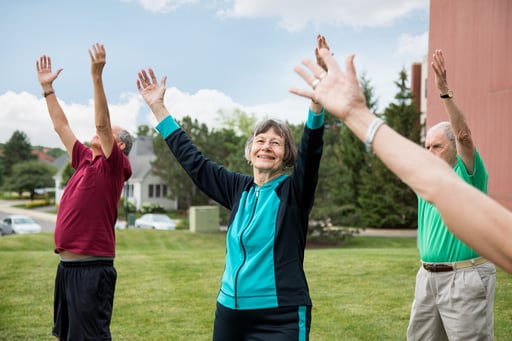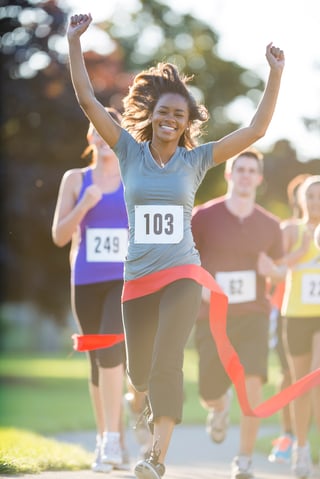 In today’s fast-paced, screen-driven world, we often lose sight of the simple, powerful connection between our minds and bodies. We get caught up in endless to-do lists, meetings, and notifications, leaving little time to pause and just be. But what if you could take small, intentional steps to bring balance back into your life? This article explores simple, effective ways to nurture that connection and create space for mindfulness, movement, and renewal.
In today’s fast-paced, screen-driven world, we often lose sight of the simple, powerful connection between our minds and bodies. We get caught up in endless to-do lists, meetings, and notifications, leaving little time to pause and just be. But what if you could take small, intentional steps to bring balance back into your life? This article explores simple, effective ways to nurture that connection and create space for mindfulness, movement, and renewal.
Your mind: The silent voice folded seamlessly in your brain that is reading this article, organizing your plans for the day, and begging to hit the coffee machine one more time before your next meeting.
Bringing mind and body back together requires effort—especially when most of us spend 8+ hours daily in front of a screen. Refocusing that attention to nurture body awareness and mindful movement calls for intentional action. Try this quick exercise a few times:
Take a deep breath, filling your lungs. As you inhale, rise onto your toes and stretch upward, as if in that first morning stretch. Hold the position for 5 seconds. Then exhale as you lower your arms, return to your heels, and relax your neck and shoulders.
This is what connection feels like: no screen, just your body in motion, doing exactly what you asked of it. With that in mind, here are some excellent ways to reconnect:
Meditation – This timeless practice often gets reduced to just “a moment of silence,” but true meditation, when practiced consistently, can lead to deep positive effects. The best part? It’s incredibly accessible. Set aside twenty minutes, find a peaceful space, and get comfortable (try these common meditation positions). Here’s one I recommend:
The Body Scan – This is a powerful way to connect with your body. Start at your feet, focus on tensing each muscle group, then fully release. Work your way up, taking 30 seconds to one minute for each group: feet, calves, thighs, glutes, core, chest, back, hands, forearms, upper arms, shoulders, neck, face, and head. You can adjust the time as needed.
Exercise – Picture this: Your brain calling you, saying, "Hey, I need you to move this body around a bit!" When you’re inactive, your brain feels it, too. We’ve all heard, “an object in motion stays in motion,” and it couldn’t be truer for our bodies. Studies consistently show that adding even a small amount of physical activity improves mood, focus, and overall health. Good news: this doesn’t mean you need an elite athlete’s routine. Just 20-30 minutes a day can make a difference! Try desk exercises, 15-minute home workouts, chair yoga, or a quick ab routine.
Hiking – Unplugging and hitting the trails is a great way to naturally shift your attention to sensations and movement. Look up local park resources for trail maps, lace up some comfortable shoes, and spend some quality time outdoors.
Fitness Center Time – A fitness center is a space dedicated to movement. Whether you join a group class, lift weights, or follow your own routine, getting active strengthens your mind-body connection. Unsure where to start? A NIFS professional can help.
Scheduling regular movement into your day brings real benefits. If you’re spending hours at a desk or focusing on deadlines, stand up whenever possible. Take short walks, step outside, or try this quick reset: inhale deeply, rise onto your toes, reach high, exhale as you lower your arms, come back down, and relax.
Now, you’re connected!


 After the excitement of holiday parties and festivities slows down, we sometimes find ourselves in a funk. Life can seem a bit slow, minimal sunlight and weather keeps us cooped up inside, and we feel a bit sluggish. Get rid of winter blues with these tips to warm the soul.
After the excitement of holiday parties and festivities slows down, we sometimes find ourselves in a funk. Life can seem a bit slow, minimal sunlight and weather keeps us cooped up inside, and we feel a bit sluggish. Get rid of winter blues with these tips to warm the soul.
.jpg?width=437&name=GettyImages-483770407%20(1).jpg) Hand-write cards and notes.
Hand-write cards and notes.
.jpg?width=399&name=GettyImages-905905000%20(1).jpg) With the weather changing for the better and the days becoming longer, this is as good of a time as any to get the family up and moving. It has been a long winter, and most of us have fallen into boring routines of being indoors binge watching Netflix or playing video games to stay out of the cold. Finally, spring is here, so it’s time to break those boring routines and switch it up!
With the weather changing for the better and the days becoming longer, this is as good of a time as any to get the family up and moving. It has been a long winter, and most of us have fallen into boring routines of being indoors binge watching Netflix or playing video games to stay out of the cold. Finally, spring is here, so it’s time to break those boring routines and switch it up!.jpg?width=401&name=Woman%20running%20in%20snow%20-%20GettyImages-894281874%20(1).jpg)

.jpg?width=457&name=Group%20x%20dancing%20to%20music%20GettyImages-897892972%20(1).jpg) Pop in those earbuds and get moving. Exercise and music go hand-in-hand for many gym-goers. Listening to music is a great way to make your work out more enjoyable. There’s nothing like cranking up an upbeat, energetic, song that adds a little pep to your step. An excellent motivator, music helps you to keep up with the pace of your workout, and inspiring lyrics keep you moving. Those specific beats and lyrics can encourage you work harder and push you to complete your workout. Keeping up with the beat provided by music can prevent you from slacking and help you power through to reach your goals.
Pop in those earbuds and get moving. Exercise and music go hand-in-hand for many gym-goers. Listening to music is a great way to make your work out more enjoyable. There’s nothing like cranking up an upbeat, energetic, song that adds a little pep to your step. An excellent motivator, music helps you to keep up with the pace of your workout, and inspiring lyrics keep you moving. Those specific beats and lyrics can encourage you work harder and push you to complete your workout. Keeping up with the beat provided by music can prevent you from slacking and help you power through to reach your goals. 

 It’s true, signing up for a 5K or a triathlon can be fairly intimidating for a first-timer. The fear of going too slow, finishing last or even not finishing at all can hold someone back from completing their first race. The fact is, very few competitors are attempting to come in first place. Most are just trying to finish! The benefits of racing are countless and most have absolutely nothing to do with how fast you go. Here are my top 5 reasons why you should complete a race:
It’s true, signing up for a 5K or a triathlon can be fairly intimidating for a first-timer. The fear of going too slow, finishing last or even not finishing at all can hold someone back from completing their first race. The fact is, very few competitors are attempting to come in first place. Most are just trying to finish! The benefits of racing are countless and most have absolutely nothing to do with how fast you go. Here are my top 5 reasons why you should complete a race:
 The benefits of providing an onsite corporate fitness center at the workplace are far-reaching and they may or may not have anything to do with reducing health care costs. For leadership, it’s easy to focus on this tangible measurement and lose sight of other reasons to support employees in their health and fitness goals.
The benefits of providing an onsite corporate fitness center at the workplace are far-reaching and they may or may not have anything to do with reducing health care costs. For leadership, it’s easy to focus on this tangible measurement and lose sight of other reasons to support employees in their health and fitness goals.